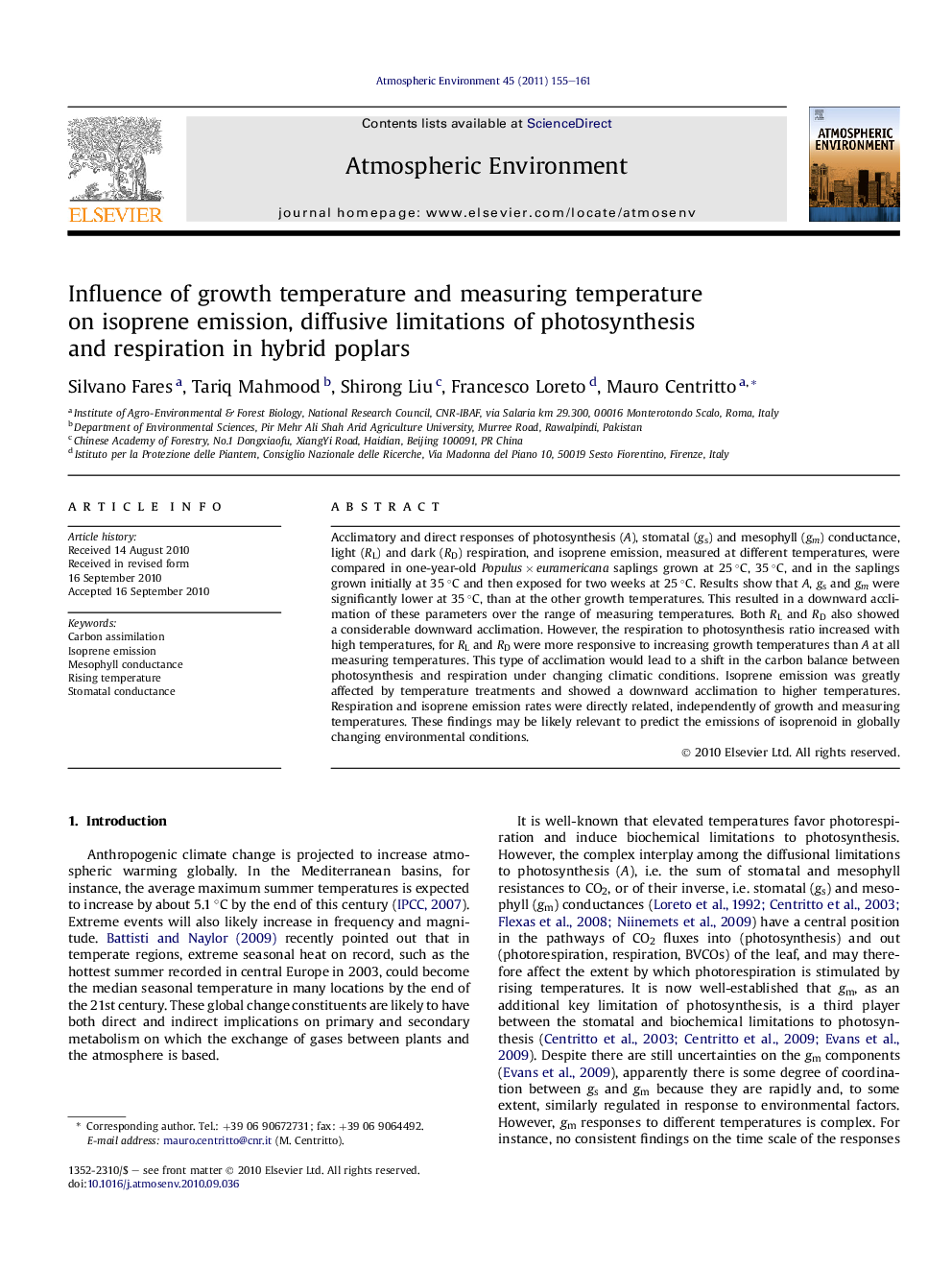| Article ID | Journal | Published Year | Pages | File Type |
|---|---|---|---|---|
| 4440349 | Atmospheric Environment | 2011 | 7 Pages |
Acclimatory and direct responses of photosynthesis (A), stomatal (gs) and mesophyll (gm) conductance, light (RL) and dark (RD) respiration, and isoprene emission, measured at different temperatures, were compared in one-year-old Populus × euramericana saplings grown at 25 °C, 35 °C, and in the saplings grown initially at 35 °C and then exposed for two weeks at 25 °C. Results show that A, gs and gm were significantly lower at 35 °C, than at the other growth temperatures. This resulted in a downward acclimation of these parameters over the range of measuring temperatures. Both RL and RD also showed a considerable downward acclimation. However, the respiration to photosynthesis ratio increased with high temperatures, for RL and RD were more responsive to increasing growth temperatures than A at all measuring temperatures. This type of acclimation would lead to a shift in the carbon balance between photosynthesis and respiration under changing climatic conditions. Isoprene emission was greatly affected by temperature treatments and showed a downward acclimation to higher temperatures. Respiration and isoprene emission rates were directly related, independently of growth and measuring temperatures. These findings may be likely relevant to predict the emissions of isoprenoid in globally changing environmental conditions.
